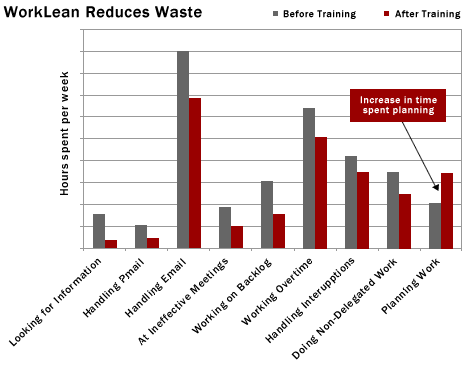WHAT OUR CLIENTS ARE SAYING
"WorkLean produces visible productivity gains immediately. It's an integral part of our organizational improvement program. And the staff loved it."
- Joan Malin
President
Planned Parenthood of NYC
FROM LEADERS WE ADMIRE
"To be effective, every knowledge worker. . . needs to dispose of time in fairly large chunks. To have small dribs and drabs of time at his disposal will not be sufficient even if the total is an impressive number of hours."
- Peter Drucker
The Effective Executive
1967
What is WorkLean?
The terminology and examples used in the WorkLean Program are derived from the Lean Manufacturing philosophy, which encourages strengthening the processes already employed at the firm. Participating in a WorkLean Program enables knowledge workers to get more work out of an hour than they could before. The resulting heijunka of administrative work, and the reduction in muda, muri, and mura leads to cost avoidance, faster decision-making, improved work quality, better client service, and more efficient space utilization.

The Problem, Quantified
- 39% of executives squander between 0.5 and 1.0 full days per week on emails, voice mails, and meetings that have zero value, according to a 2005 McKinsey survey. 16% waste between 1.0 and 2.5 days per week.
- 28% of a knowledge worker’s day is lost to unimportant or non-urgent interruptions, according to Basex. Only 12% of an information worker’s day is spent thinking and reflecting.
- Knowledge workers are interrupted every 11 minutes. It takes them 25 minutes to return to the task, and 40% of the time they never get back to it, according to a UC Irvine study.
The Solution
Participants who apply WorkLean principles recover, on average, nine hours of work time per 40-hour week – a productivity increase of 23%.
